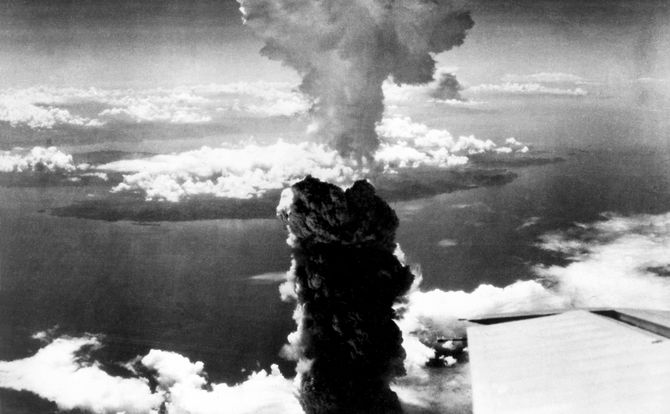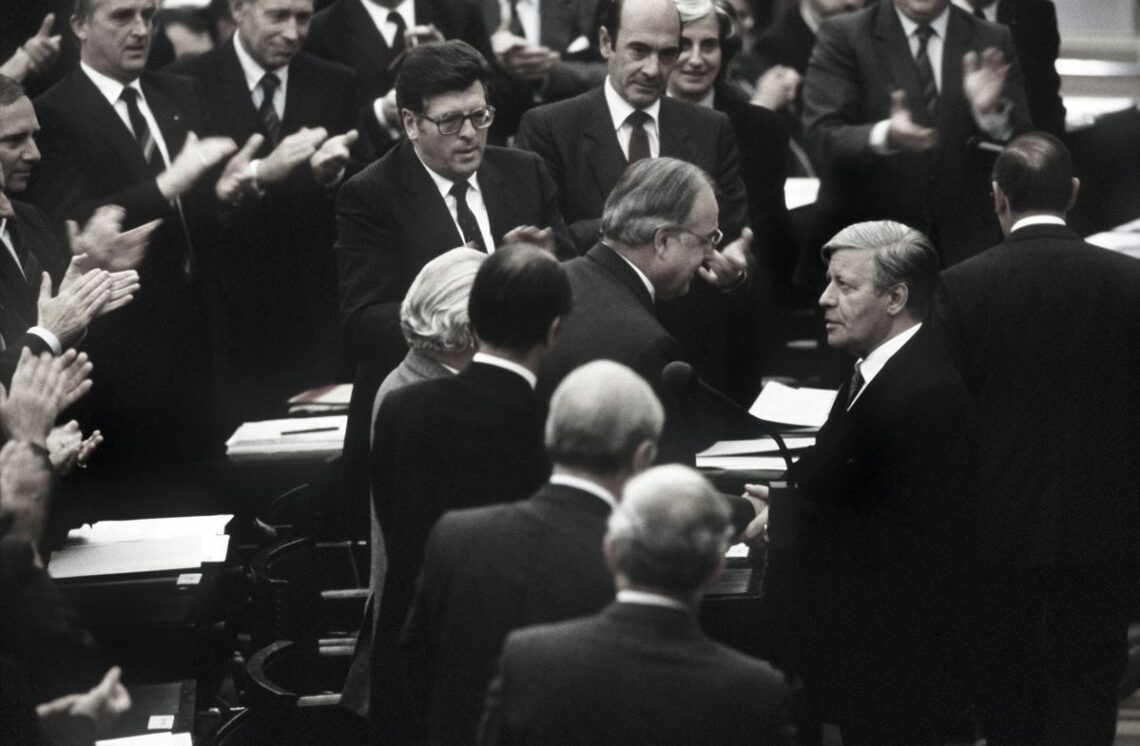Political implications of terminating the INF Treaty
President Trump’s withdrawal from the Intermediate-Range Nuclear Forces (INF) Treaty is one of many pull-offs from contractual security arrangements. For the U.S., it changes little in the relations with Russia, but in Europe, it has stirred up outrage.

In a nutshell
- Withdrawal from the INF Treaty is part of a larger U.S. retreat from multilateralism
- In Europe, however, nuclear weapons lost their political significance in the mid-1980s
- Today, the U.S. and Russia are seeking a free hand to deal with strategic risks in Asia
On February 1, United States President Donald Trump announced his country’s withdrawal from the Intermediate-Range Nuclear Forces (INF) Treaty. In less than six months, when the decision takes effect, both the U.S. and Russia will be free to acquire and deploy land-based medium-range missiles with warheads of their choosing.
Besides giving the two sides an extra opportunity to malign each other or mutter about bad faith, the U.S. pullout from the INF agreement will change little in its bilateral relationship with Russia. For Europe and above all for Germany, however, the impact will be much greater. Already outrage and confusion have become evident, both in media reports and at this year’s Munich Security Conference.
For President Trump, the decision is just one step in a series of withdrawals from contractual security arrangements, comparable to his retreat from multilateralism. Both processes began long before the Trump administration, gathering momentum under President George W. Bush (2001-2009), and they reflect an element in the American DNA ever since George Washington’s warning against foreign entanglements. When the New START Agreement expires in 2021, it will bring to an end a 70-year era of American efforts to implement a comprehensive arms control regime.
Within the traditional paradigm of arms control, land-based medium-range nuclear weapons, especially missiles, play a rather limited role in the U.S.-Russian strategic balance. Introducing new systems will not necessarily provide new strategic options. Attempts to bring China into the bilateral arms control process begun by the U.S. and Soviet Union have never worked since early attempts by President Jimmy Carter (1977-1981).
U.S.-based intermediate missiles do not have the range to hit potential targets, while forward-deployed systems (in Europe or East Asia, for example) are politically unacceptable to the host countries. The sea- and airborne components of the nuclear triad (ballistic missile submarines and strategic bombers, respectively) can provide a close-in threat to Russia at a much lower cost.
Political weapons
The public outrage in the mid-1980s at the deployment of U.S. Pershing II missiles in West Germany is a useful reminder of the political role of nuclear weapons. As its history shows, the atom bomb is par excellence a political weapon.
The Hiroshima bomb was dropped in August 1945 not just to end the hugely cruel Pacific war with Japan but also to keep the Soviet Union from getting fully involved, buttressing its claims as a cobelligerent. In terms of casualties and damage, the devastation it inflicted was surpassed by the carnage of U.S. conventional bombing. Perhaps the most important consequence of the Hiroshima bomb was to establish a “tradition of nonuse” that became “part of the ordinary daily currency of international politics,” as the strategic theorist and arms control expert Thomas Schelling noted.
Early in the Cold War, nuclear weapons loomed large given the profound asymmetry of conventional forces in Europe.
Nuclear weapons loomed large again in the early years of the Cold War, given the profound asymmetry of conventional forces in Europe. With the U.S. presence quickly reduced to around 50,000 troops, while Soviet land forces remained nearly at wartime strength, the only way to balance the latter’s overwhelming conventional superiority was U.S. nuclear weapons. This was Stalin’s conclusion, too. When the first Berlin Crisis occurred in 1948, the U.S. did not have a single combat-ready nuclear weapon in Europe and was forced to ask Britain’s Labour government to grant basing for medium-range bombers with nuclear bombs. The U.S. thereafter turned toward a mixed strategic posture with intercontinental and medium-range bombers and later missiles.
By the time NATO got organized in the early 1950s, an asymmetric balance had been established. Deterrence began to work in terms of virtual nuclear warfare. The U.S. could check Soviet conventional superiority and its control over Eastern Europe, whereas the USSR introduced medium-range missiles to hold Europe hostage as a constraint on the U.S. By the late 1950s, American nuclear capabilities had reached their peak in terms of megatonnage and warheads, many of which could reach the Russian heartland.
A failed Soviet attempt to counter this superiority, by installing medium-range missiles in Cuba in 1962, helped launch the initial phase of nuclear arms control. The missile crisis highlighted the need for improved command and control of nuclear arsenals and for reliable channels for bilateral crisis communication. The revelation that New York and other major cities were on the Russian list of priority targets also served as a salutary shock.
In the post-Cuban missile crisis period, the Soviet Union was quick to catch up with the U.S. in amassing an intercontinental nuclear strike force. Under conditions of nuclear parity, the name of the game became preserving second-strike capability under the doctrine of mutual assured destruction.
Decoupling Europe
But if the strategic equation was stable on the intercontinental level, things were more complicated in the European theater. Here the difficulty was to avoid Europe being decoupled from the U.S. by Russia’s ability to control the escalation of a crisis and deny a reassuring American response.
The Soviet deployment of SS-20 intermediate-range missiles in the late 1970s was a direct challenge that could have tipped the strategic balance in Europe – and once again was a highly political decision. It almost succeeded, thanks to the huge demonstrations in Western Europe to oppose the U.S. counterdeployment of nuclear-armed Pershing II and cruise missiles. However, NATO’s decision to respond with its “Double-Track” policy – instituting the deployment of 572 mobile U.S. nuclear-tipped missiles in Europe while simultaneously offering an agreement on limiting medium- and intermediate-range ballistic missiles – foiled the Soviet maneuver.

While German Chancellor Helmut Schmidt (1974-1982) paid heavily for his co-authorship of the Double-Track agenda, losing the support of many in his Social Democratic Party, his successor Helmut Kohl (1982-1998) also backed the Pershing II deployments and won handsomely at the polls. This proved to the Soviets that the nuclear missiles had lost their political currency.
Soviet leader Mikhail Gorbachev later considered this moment to be the end of Soviet security diplomacy in Europe. No less than President Ronald Reagan’s Star Wars initiative – a technological race the USSR’s faltering economy had no chance to sustain – it was a sign of the impending Soviet collapse. Thereafter, the geostrategic situation on the continent reversed completely, with Mr. Gorbachev agreeing to military parity codified through the Treaty on Conventional Armed Forces in Europe (CFE). In fact, the force levels enshrined in this pact quickly became obsolete with the USSR’s demise, while the actual balances shifted in NATO’s favor. This prompted Russia to turn to NATO’s original doctrine of nuclear deterrence.
New environment
Since that time, Russia’s conventional capabilities have improved considerably. Yet the addition to its arsenal of medium-range missiles that can reach Europe has given Moscow no extra political advantages or strategic options.
That is because today’s strategic risks can be found in Asia. They are outside NATO’s purview and probably not amenable to renewed arms control, if the fate of the Iran nuclear deal and negotiations with North Korea are any guide. Any agreements that ensue will likely be informal. This means the crucial ingredients of mutual deterrence in the Cold War era – national control and reliable communications – will be lacking for most nuclear newcomers. Imposing the necessary restraint will become a global concern.
The U.S. and Russia had frequent second thoughts about the INF Treaty due to its noncoverage of Chinese missiles.
Both the U.S. and Russia had frequent second thoughts about the INF Treaty, usually due to its noncoverage of Chinese missiles. Preserving the treaty would make little difference in Europe, where neither side has compelling strategic reasons to deploy land-based medium-range missiles anyway. But both the U.S. and Russia face unchecked and growing Chinese capabilities, which in turn could trigger a chain-reaction response from India and Pakistan. China has been quite consistent in warning Russia and the U.S. to abandon the INF Treaty. Indeed, this has been Beijing’s line ever since William Perry, U.S. defense secretary under President Bill Clinton, attempted to get the treaty extended to China in the 1990s.
Withdrawing from the INF Treaty has the obvious virtue of giving both signatories a free hand versus their Asian competitors. For the moment, this seems a more important consideration for the U.S. Two precedents made President Trump’s decision easier: President George W. Bush’s withdrawal from the Anti-Ballistic Missile Treaty in 2002 and his own pullout from the Joint Comprehensive Plan of Action (JCPOA) with Iran in 2018.
In the European context, the U.S. had little invested in the INF Treaty save for its perceived constraints on nuclear weapons and concern about the European reaction. To soften the blow, Mr. Trump followed his usual practice when withdrawing from treaty obligations of dangling the possibility of a far better but unspecified future agreement, presumably including China.
On the ground, nothing has changed in Europe. Neither the U.S. nor Russia have plans for deploying new medium-range missiles. Russia’s existing missiles can already reach most anywhere in Poland and the Baltic states – although at present there is no political rationale for using them.
Even so, the negative reaction in Europe was strong, especially in Germany, where self-declared nuclear strategists are now clamoring for the deployment of U.S. missiles. Their arguments hinge on an alleged Russian treaty violation that involved deployment of cruise missiles with a range between the banned limit of 500 to 5,500 kilometers – even though by some accounts the discrepancy was only 20 kilometers. In fact, the justification for deploying American intermediate-range missiles is dubious when Russian capabilities today are far more modest than Europe faced during the Cold War.
Outrage vs. strategy
Since nuclear weapons are above all political, their value changes with political circumstances. This lesson applies especially to Europe, but even after 70 years of experience, it does not seem to be remembered or understood.
In Poland, the Ministry of Defense has already declared its willingness to allow U.S. missiles on its territory. In Germany, old political battle lines are being mindlessly re-invoked. These divisions are reinforced by a NATO secretary general who has arrogated to himself the authority to shape Europe’s political response to the INF Treaty’s lapse – a role his office does not empower him to play.
Meanwhile, politicians from both of Germany’s coalition parties have come up with a proposed “solution” that would require Russia to withdraw and reposition its missiles. This could only be imposed by a treaty Moscow has given no sign of wanting. Such proposals are patently ridiculous because they fail to address the underlying lack of regional stability, which was the cause of the INF crisis and of the deterioration of relations with Russia in general.
Dancing to Moscow’s tune
It is hard to imagine a sensible solution to this crisis. There may not even be a need to solve it, bearing in mind the political nature of nuclear weapons. If the missile category covered by the INF Treaty has lost its political significance in Europe, then mutually agreed constraints on those capabilities have lost their political relevance as well.
The ultimate irony could be that hysteria over a purported nuclear threat will give Moscow political leverage over Europe that the Soviet Union lost hope of exercising decades ago. This only underscores the need for Europe to rethink its future relations with Russia.








